All Available Episode
All Season 15 Episode

1. Morioka: Slow Life, Indie Spirit
In January 2023, the New York Times newspaper introduced Morioka as one of its "52 Places to Go" - second only to London. The capital of Iwate Prefecture was highly praised for its historic architecture; its compactness, making it easy for people to get around on foot; and the abundance of nature, from the nearby mountains to the river that runs through the city center. On this episode of Journeys in Japan, Canadian actor Kyle Card visits this city which is little known abroad and often overlooked at home. He explores its independent stores and numerous coffee shops, and chats with the people who call it home.

2. 360 Degrees of Mt. Fuji: Hiking the Long Trail - Part 1
In 2021, a long trail course was established that encircles Mt. Fuji. By following this trail, one can explore not only the natural beauty but also the profound allure of Mt. Fuji, which has been a source of local history, culture, ancient beliefs and artistic inspiration for centuries. Kyle Card, a Canadian actor who previously completed the Tohoku Trail, now journeys around Mt. Fuji during the breathtaking transition from autumn to winter.
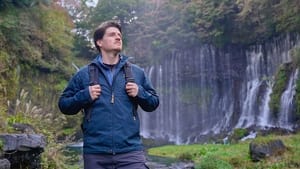
3. 360 Degrees of Mt. Fuji: Hiking the Long Trail - Part 2
In 2021, a long trail course was established that encircles Mt. Fuji. By following this trail, one can explore not only the natural beauty but also the profound allure of Mt. Fuji, which has been a source of local history, culture, ancient beliefs and artistic inspiration for centuries. Canadian actor Kyle Card continues his journey around Mt. Fuji during the breathtaking late autumn season, following the first part.
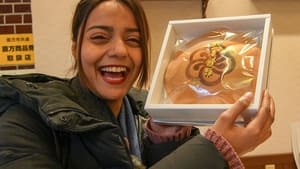
4. On the Sugar Road from Saga to Fukuoka
The Nagasaki Kaido was an important trade road from the 1630s that connected Nagasaki's port—the only one open to overseas trade in those days—to Kokura in Fukuoka Prefecture. Nicknamed the Sugar Road, the 220-kilometer path carried covetous sugar and their sweet recipes. Aliza Ahmed Khan from Pakistan discovers the distinctive confectionery culture that developed along the route.

5. Isumi Shines as Liveable City
Isumi in Chiba Prefecture was voted most desirable place to live in the Tokyo area for its accessibility and great outdoors with both the ocean and mountains. This time, Alex and Binderiya, a Tokyo-based couple, explore Isumi to see if this could be their next home sweet home.
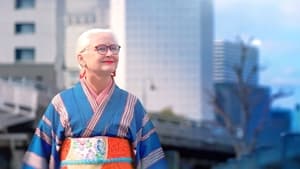
6. SILK Road: Threads of History from Gunma to Yokohama
In 1859, when Japan reopened its doors after more than two centuries of isolation, goods flowed in and out of newly expanded ports. At the time, raw silk became the country's largest export, as the silk industries in France and Italy had been hit by an epidemic of silkworm disease. At one point, Japan was the world's biggest exporter. On this episode of Journeys in Japan, Sheila Cliffe from the UK follows the Silk Road from northern Kanto, once a major production area, to Yokohama, where the silk took off to the world.

7. Geto Kogen: Deep Powder Dreams
Geto Kogen lies in an area of Japan known as a gosetsu chitai—a region with extremely heavy snowfall. In an average year it gets as much as five meters of snow, and that means it can offer runs found in few other parts of the country. These days people come from around the world to find out what makes this resort special. They start their day with some fresh tracks, taking the gondola to the top ahead of the official opening time when the slopes are covered with pristine snow. They enjoy tree runs with deep powder snow through wooded areas that are usually off-limits at other ski resorts. And they head out for some backcountry skiing along with accredited guides. On this episode, Michael Keida and his wife Kumiko take full advantage of the JAPOW conditions at this gosetsu paradise.
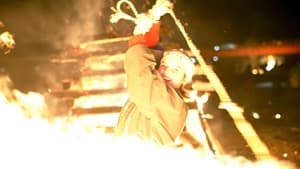
8. Akita's Festivals Light Up Long Winters
The city of Senboku in Akita Prefecture is made up of three towns: Tazawako, which has the deepest lake in Japan; Nishiki, home to farming scenery: and Kakunodate, called the little Kyoto of Tohoku. In addition to the stunning nature and samurai culture, visitors can enjoy spectacles related to the Lunar New Year. Catrina Sugita experiences the area's winter lifestyle and its fiery festivals.

9. Tomonoura: Tradition and Community in a Historic Port
Tomonoura is a port town on the coast of the Seto Inland Sea, in Hiroshima Prefecture. It occupies an important location because this is the point where the tides from each end of the Inland Sea meet. In the old days, ships had to wait here until the ebb tide, before continuing their journeys. For that reason it became known as "the port for awaiting the tide" and was even mentioned in the Manyoshu, a collection of Japanese poems collated some 1,200 years ago. Tom Miyagawa Coulton is a photographer who lives on an island in the Seto Inland Sea. On this episode of Journeys in Japan, Tom explores the historic town of Tomonoura and discovers the town's centuries-old tradition of forging steel. He also meets the local people who have protected this town and kept their community ties with love and care.
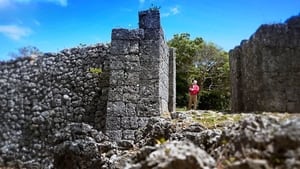
10. Okinawa: Whispers of the Ryukyu Kingdom
Across Okinawa's islands, you will find the stone walls of castle ruins. The Ryukyu Kingdom was a country for 350 years before it was absorbed into Japan. From the 12th to 15th centuries, it erected many gusuku or castles to protect the land and also to provide a place of worship. Alfie Goodrich sets out to discover the beauty and mystery of Okinawa's old kingdom through its gusuku.
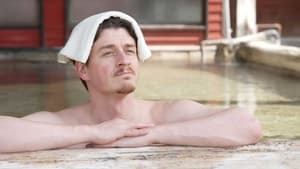
11. Taketa: Onsen Bathing Old and New
People in Japan love bathing in hot springs, or onsen. And since the old days, it has been common for people to check into residential hot-spring inns for extended stays to boost their health, heal their aches and regain their well-being. This style of onsen therapeutics is known as Tōji. On this episode of Journeys in Japan, Kyle Card travels to Taketa City in Oita Prefecture to discover a contemporary style of Tōji therapy where visitors can recover their energy while enjoying the majestic natural environment along with some of the world's finest carbonated hot springs.
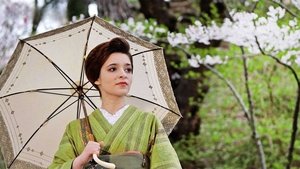
12. With Isabella Bird — Part 4: On the Road to Akita
British explorer and writer Isabella Bird arrived in Japan in 1878, just 10 years after the country opened its doors to the West. Accompanied by a young man who served as both interpreter and attendant, she traveled deep into the hinterland. Unbeaten Tracks in Japan is her highly praised travelogue of that journey. In this episode, Maria Brandmann follows Bird's route along the Ushu Kaido highway from Kaneyama-machi (Yamagata Prefecture) to Gojome-machi (Akita Prefecture).

13. Okayama: Divine Beings Up Close
Okayama Prefecture is a magical place where ancient myths live on. Shinto shrines venerate unique gods and Buddhist temples feature rare rituals. Kanoa, from Hawaii, explores the eastern side of the prefecture to discover how gods, demons and Buddha are rooted in daily life.

14. Ogaki: The City of Water
Ogaki in Gifu Prefecture is called "the city of water." Its abundant groundwater has fed countless spring water wells, and a river running through the city center makes for relaxing scenery. On this episode of Journeys in Japan, DJ George Cockle from the US dips into Ogaki's water scene. He also encounters local specialties and the wisdom of locals that evolved from the water culture. George, a beach person who enjoys surfing, discovers the appeal of water in this landlocked city.
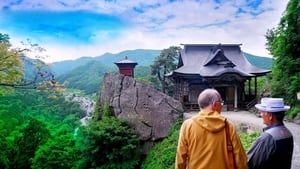
15. Yamagata: Heartland of Wood Architecture
Yamagata Prefecture, some 300 kilometers north of Tokyo, is a mountainous region. Around 70% of its land covered by forests and to this day it boasts a long tradition of using that wood in its buildings. On this episode of Journeys in Japan, American architect James Lambiasi visits a hot spring resort where the main street is lined with hotels built from timber; an ancient Buddhist temple where you can find wooden buildings standing on top of sheer cliffs; and a splendid row of wooden warehouses constructed 130 years ago and still in pristine condition. James also observes a construction company that has developed cutting-edge technology for using timber in large-scale contemporary architecture. He is given a hands-on demonstration of how the forests are maintained, and he meets an outdoors guide who shows the way he lives in the backwoods.
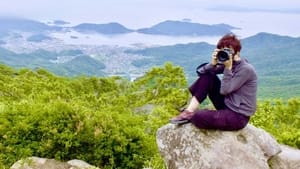
16. Shodoshima: Island of Discoveries
Shodoshima, the second largest island in the Seto Inland Sea, is known for its beautiful landscapes, natural scenery and traditional life. Visitors can enjoy panoramic views of deep gorges and far-off islands out at sea. In the center of the island, you can explore terraced rice fields with a 700-year history. You can also find old-style soy sauce breweries that keep alive centuries-old production methods. On this episode of Journeys in Japan, Greek photographer Androniki Christodoulou explores Shodoshima Island and meets the people who are preserving their island traditions.

17. Deep Dive in Sugashima: The Island of Women Fishers
Japan's legendary Ama free-diving women still plumb the waters around Sugashima Island in search of abalone, turban shell and Ise spiny lobster. We glimpse the island through this extraordinary tradition, as well as through the guided tours held by elementary school kids.
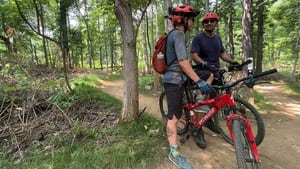
18. NISEKO IN SUMMER: Natural Fun in the Great Outdoors
Niseko is renowned as one of Japan's leading winter sports destinations. But these days it's also becoming famous as an exciting summertime resort. Visitors can experience a wide variety of outdoor activities, ranging from mountain biking and whitewater rafting to hiking, horseback riding and onsen hot springs. On this episode of Journeys in Japan, we follow video creator Steven Lefever as he explores Niseko's abundant natural environment and discovers how it has developed in harmony with nature to become a magnet for enthusiasts from around the world.

19. Kumano Kodo: Fast Hiking to Nirvana
The Kumano Kodo, leading to Kumano, the sacred land of the Gods, is one of the few pilgrimage roads designated as a UNESCO World Heritage site. Twenty years after the designation, we explore the pilgrimage trail by fast hiking, which combines the best of hiking and running.
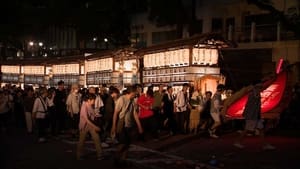
20. Nagasaki's Obon: A Time for Remembrance
Obon is a summertime ritual when Japanese people welcome ancestors' spirits home from the Buddhist Pure Land. The people of Nagasaki have a distinctive way to commemorate this. They light fireworks and firecrackers at family graves and parade boats ferrying the spirits of the deceased through the streets and then back to the Buddhist Paradise. This episode takes a deep dive into Nagasaki's unique style of Obon.

21. With Isabella Bird — Part 5: On the Road to Aomori
British explorer and writer Isabella Bird arrived in Japan in 1878, just 10 years after the country opened its doors to the West. Accompanied by a young man who served as both interpreter and attendant, she traveled deep into the hinterland. Unbeaten Tracks in Japan is her highly praised travelogue of that journey. In this episode, vocalist Chiara Terzuolo traces Bird's route from the Hiyama district of Noshiro City, Akita Prefecture. She then passes through Odate City and continues until she reaches Kuroishi City in Aomori Prefecture.

22. Osaka: OSAKA HEART AND SOUL
Osaka is a dynamic city with a dynamic history. Photographer Alfie Goodrich captures the food culture of the "Kitchen of Japan," the waterways that made it a commercial center, and the architecture reflecting the era when it surpassed Tokyo economically. He meets the spirited and sometimes flamboyant residents. The journey fittingly starts at the Osaka Castle, which was founded by warlord Toyotomi Hideyoshi who was known for his flamboyant sensibility.

23. Tokushima: Heartland of Fermentation
Tokushima Prefecture, in the eastern part of Shikoku Island, is renowned as a heartland of traditional fermentation. It is especially famous for its indigo dyeing tradition which brought prosperity to the region in premodern times. At the same time, specialist crafts were developed, such as Otani ware, a style of pottery that is known for its huge vats used for indigo dyeing. In this episode, Kanoa explores this distinctive fermentation culture and travels into the mountains to discover a unique kind of fermented tea called Awa-bancha.

24. OITA Kunisaki Peninsula: A Land of Buddhas and Gods
The Kunisaki Peninsula, known for its temples, shrines and pilgrimage paths, abounds with rites enduring from ancient times. The Kebesu Festival, held every October, is one of them. Writer David Conklin explores this scintillating fire ritual and other unique religious traditions. He also savors the area's delicacies, lifestyle and stunning nature.

25. Another Kobe: A Thatched Roof Village
North of Kobe's neon lights you can enjoy another side of the city—a hidden village with over 650 thatched homes. It's another world that takes you back in time. American actor Charles Glover delights in the rich nature, the architecture, the charming people, the delicacies and even a rural kabuki performance.
